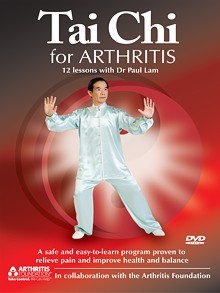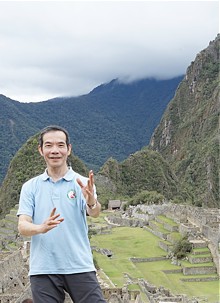Acceptance Through Science
By Dr Paul Lam and Nancy Kayne
Copyrights: Tai Chi Productions 2010. All rights reserved except copying for educational, non profit purpose. For example you can copy this article for your fee paying students and conference attendees provided you do not charge a fee for it.
We all know that Tai Chi benefits our physical and mental health. We know that because we’ve heard it from others. We’ve probably experienced it ourselves. That’s not enough. The way for Tai Chi to be propagated by official bodies is through scientific studies. Governments and large organizations have heard about the benefits of Tai Chi as have many physicians and other scientists. But they need proof, the kind of proof that only scientific studies offer. Currently the going word for health planners worldwide is “evidence based.” To be supported, a program needs to have scientific evidence, just as a doctor is required to practice evidenced-based medicine.
Keep in mind, though, that not all types of studies suffice. Take case studies, for example, a fairly common method used in the medical world. With this type of study, case histories are recorded and analyzed carefully. Sometimes, certain cases are followed for years, as was done with comparing identical twins, some of whom are brought up together, others separately. Identical twin studies are useful in finding out which outcomes can be attributed to genetic factors and which to environmental factors.
Case studies can be very useful, and sometimes they are the only choice in order to avoid adverse effects on the subjects. But the case-study method doesn’t use a control, which eliminates the possibility of comparison. Thus, the results of the studies can always be attributed to other causes. We could tell the scientific world that hundreds of our students benefited from Tai Chi, but that won’t have any effect. The scientific world won’t budge without a controlled study, or to be more precise, a randomized controlled study.
Emory University used this type of study in 1996 to investigate the prevention of falls in older people. This study, called the FICSIT study (Frailty and Injuries: Cooperative Studies of Intervention Techniques), had a tremendous impact on the acceptance of Tai Chi.
Since then there are thousands of studies published showing tai chi’s many health benefits. The National Center for Complementary and Alternative Medicine has listed many health benefit of tai chi, as well as the Center of Disease Control and Prevention (CDC). Based on the evidence, CDC has recommended Dr Lam’s Tai Chi for Arthritis program for fall prevention, many arthritis foundations support this program from studies listed below. Medical studies are oten too complex for most of us to understand fully, and to translate medical studies into real life practice in the community can be challneging.
A large number of governmental departments, universities and organizations gave the Tai Chi for Health programs support and accredition because of medical evidence, our high quality and standardised training system and our instructional material. Click the links to see the supporting organizations and some of the studies done by Dr Paul Lam and his associates.
Related articles:




